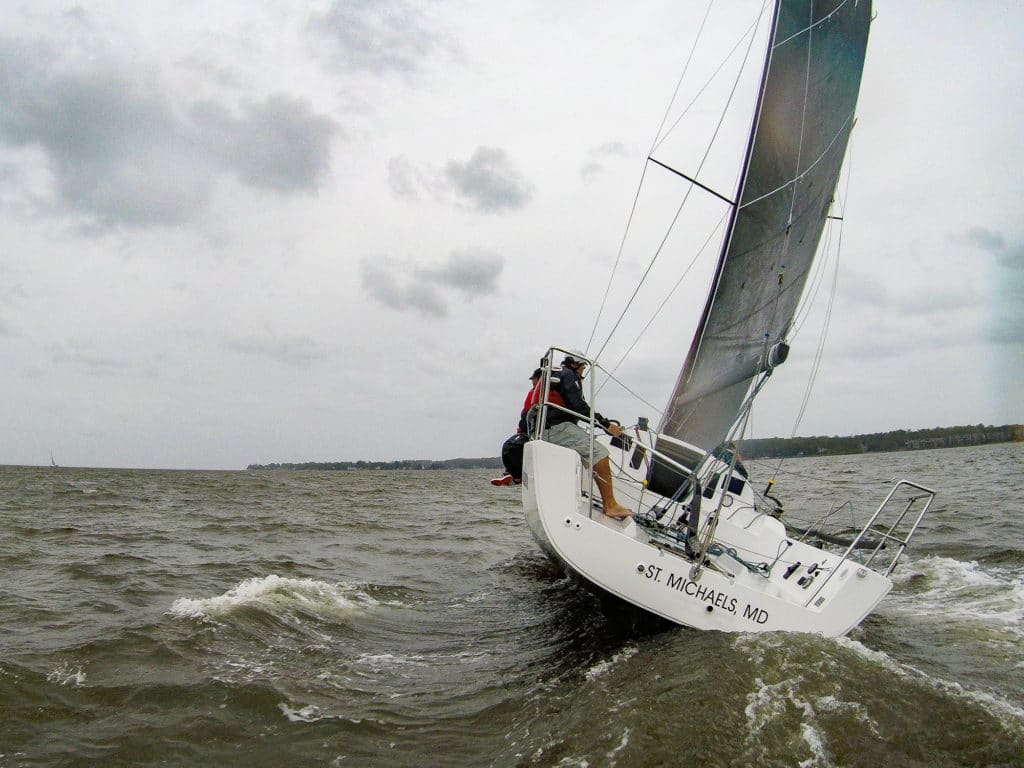
Fall is the time for the big championships when the season’s work, practice and racing are on the line, put up or shut up. If you’re confident of winning your class title because you know your boat is going as fast as it can ever be made to go, then stop reading here and go out and win. But if you think there is something a little bit wrong — that you seem to be going at times and not at other times — then maybe a few tuning tips will lead you to more consistent performance. And, of course, it’s consistency that wins in series racing.
Frequently in One-Design & Offshore Yachtsman we talk about the major “go-fast” factors of sails and specialized gear. But you shouldn’t be thinking of big changes now. A common mistake is to install new and complicated gear right before a major regatta. This serves only to take up time that might have been spent practicing and to distract you with something in which you can’t have complete confidence.
When it comes to simple adjustments, the word “tuning” is virtually synonymous with the word “balance.” What you are trying to do after all your money is spent and all the gear is aboard and you have the best sails you can afford…what you are trying to do then is make the boat balance properly.
Unless it’s a very peculiar boat it will not go well until it feels like it’s going. When going to windward you should have a light weather helm. The helm should be measured by tiller angle, not by pressure. If the tiller has an angle of three to five degrees to the centerline when the boat is upright, then your helm is right. Pressure on the tiller can depend on the shape and size of rudder and is therefore not an accurate way to determine helm. However, it’s fair to say that if pressure on the tiller is extreme then either the boat does in fact have a lot of helm, or the rudder shape is very bad. Assuming good rudder shape (fairly vertical; not sticking too far out astern) there should be light pressure on the tiller to go along with the three to five degrees of helm.
If your boat does not have the desired helm — if it has no helm, lee helm or too much weather helm — here are a few ways proper balance may be achieved without the designer going back to the drawing board:
- If you have a high-aspect (deep and narrow) centerboard, the angle at which it is carried will make a big difference in helm. If you have neutral or lee helm put the board down further (so it is further forward below water) thus moving your center of lateral resistance forward. Conversely, if you have too much weather helm, pull the board up slightly, which moves the area (and therefore the boat’s CLR) aft.
- In many classes, the mast can be moved fore and aft. This can even be done under sail in some classes. If you have too much weather helm, move the mast forward an inch or two, not just at the base, but all the way up. This will move the center of effort forward and reduce helm. If lee helm is your problem, then the mast should go aft.
- In some classes the jib tack can be moved fore and aft. Move it forward if you have too much weather helm, aft if you have lee helm.
- If the mainsail draft is too far aft it will cause a tight leech, which will induce weather helm. You may ease the leech by tightening the Cunningham hole, or by easing the sheet and moving the traveler slightly to windward. This will put more twist in the sail, easing the leech at the top and reducing helm; but you should first try easing the leech with Cunningham control. Any time you put tension on the side of a sail you move the draft toward that side. Any boat will tend to develop weather helm as the wind rises, so the traveler should be eased to leeward as the wind comes up to help control helm and to make the boat easier to keep upright.
- Most important (and closely related to the point above) all small boats (and most big ones) should be sailed as upright as possible except in the very lightest of winds. Any boat which uses human ballast should be sailed absolutely upright. This prevents excessive weather helm, gives the boat its most efficient shape, presents the centerboard and rudder to the water in their most efficient form and the sails to the wind in their most efficient form.









